The WW1 Romanian Navy
Independent since 1878, Romania already had a flotilla on the Danube, but no real fleet. This one was able to be constituted thanks to the access to the black sea which it gained at the end of the Russo-Turkish war. On the coast of the Dubrusja, the port of Costanza was converted into an arsenal. Her first seagoing vessel was the gunboat Grivita, assisted by the sailing school Mircea. At the end of the 1880s, the addition of the small Elsiwck cruiser Elisabeta and other units strengthened its potential, while the Danube flotilla was also greatly improved. In 1899, a naval plan was established pleading for the construction of 6 coastal battleships, 4 dislocations and 12 torpedo boats. The Danube division was to be supported by 8 monitors and 12 river torpedo boats.
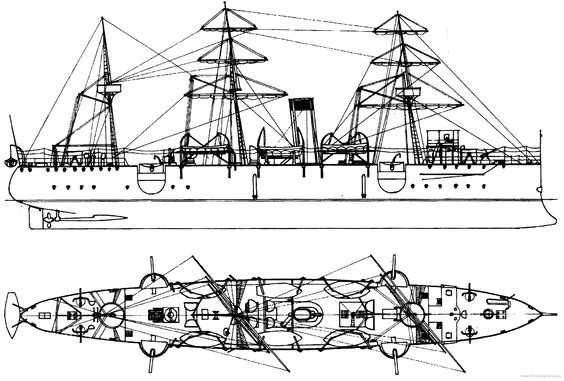
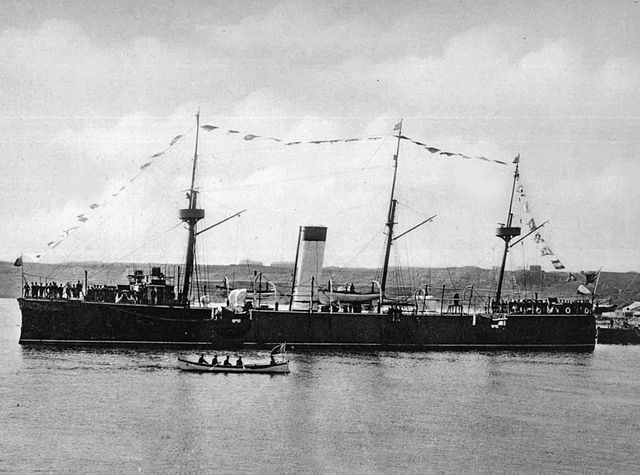
Romanian Cruiser Elisabeta 1888
This program does not live on an entire achievement. Following the first Balkan war, when it was neutral, Romania received from Bulgaria a piece of coastal territory on the Black Sea. But the Bugarie changed its attitude and in the Second Balkan War, following its aggression, Romania invaded it in return for the North and occupied it. Romania gained an important strip of coastal land up to Varna. The program of 1899 had succeeded the 1912 program pleading for 6 cruisers and 12 heavy destroyers, then a supplementary plan specified a battleship of 13,000 tons. All these programs were doomed because of the modest finances that could be given to the navy. The First World War put an end to these developments. Here are the Romanian numbers at this date:
1 Cruiser: Elisabeta (1888).
11 torpedo boats: 3 high-sea class Naluca (1888) and 8 fluvial class Capitan Nicolae Lascar Bogdan (1907).
14 Miscellaneous: Grivita gunboat (1880, training ship), 3 Oltul class gunboats (1888), 2 Rahova class (1882), 3 Monteano class fishermen (1893), Alexandru cel Bun (1882), 4 Class Ion river classliners C Bratianu (1907).
Tonnage 1914: Cruisers: 1 Raiders: 11 Various: 14
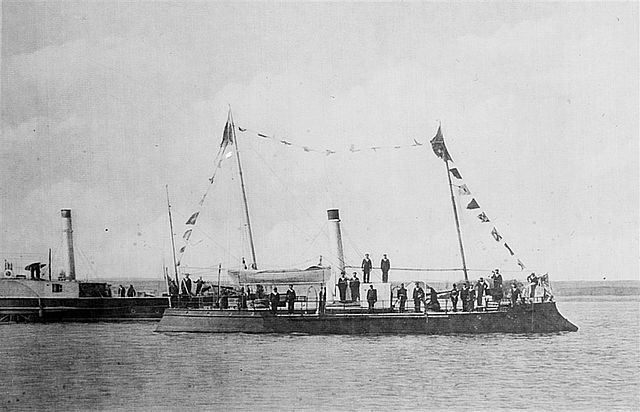
Gunboat Fulgerul 1873
The Romanian Navy during the First World War:
Surrounded by its powerful neighbors, Romania could only remain neutral at great cost. Moreover, the power was in the hands of Francophiles who had received assurances from France on future territorial enlargements in case of participation in the war alongside the allies. What she did in 1915.
The critical situation in Russia began to cast doubt on the validity of this decision, but in 1916 she declared war on Austria-Hungary. This decision was fraught with consequences: Germany and Bulgaria went to war against it, and the poorly equipped Romanian troops were quickly pushed into the defense and then swept away by an offensive that ended only with the capture and occupation of Bucharest.
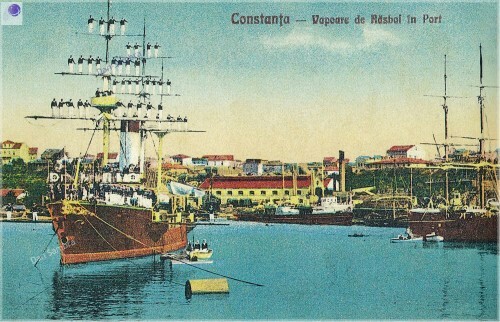
Costanza harbor
The horrendous human losses (50% of the troops engaged) meant that the few remaining forces had no alternative but to retreat to Russia or they participated in the holding of the front in the southern sector. The navy was more or less forced into inaction, in particular deprived of four powerful destroyers ordered from Italy and requisitioned. The Elisabeta Cruiser for example, was disarmed that same year 1916.
It was decided to requisition and transform 4 cruise ships into auxiliary cruisers. The latter carried out escort missions and were integrated into the Russian Black Sea Fleet. When compared with the Danube division, which was comparatively well equipped, she was able to stand up to the Austro-Hungarian flotilla.
With the 1917 revolution in Russia, Romania lost its only local ally and its situation became internable. In May 1918, she signed an armistice with very harsh conditions, losing the Dobrudja in favor of Austria. With the armistice of November and the defeat of the central empires, Romania recovered the Dobrudja and its territory gained some 50% of coastline to the North, stopping south of Dniester.
In 1920, this time she received her expected ships, including two Italian destroyers, but also four ASM gunboats to France, three Austro-Hungarian river monitors, and seven Austrian torpedo boats.
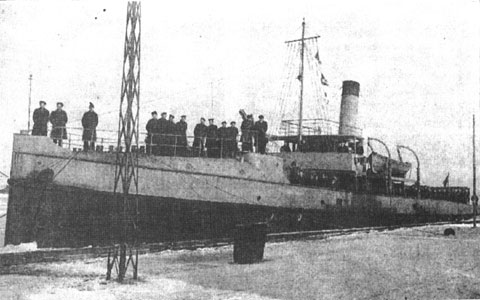
Romanian minelayer Aurora

 Latest Facebook Entry -
Latest Facebook Entry -  X(Tweeter) Naval Encyclopedia's deck archive
X(Tweeter) Naval Encyclopedia's deck archive Instagram (@navalencyc)
Instagram (@navalencyc)





 French Navy
French Navy Royal Navy
Royal Navy Russian Navy
Russian Navy Armada Espanola
Armada Espanola Austrian Navy
Austrian Navy K.u.K. Kriegsmarine
K.u.K. Kriegsmarine Dansk Marine
Dansk Marine Nautiko Hellenon
Nautiko Hellenon Koninklije Marine 1870
Koninklije Marine 1870 Marinha do Brasil
Marinha do Brasil Osmanlı Donanması
Osmanlı Donanması Marina Do Peru
Marina Do Peru Marinha do Portugal
Marinha do Portugal Regia Marina 1870
Regia Marina 1870 Nihhon Kaigun 1870
Nihhon Kaigun 1870 Preußische Marine 1870
Preußische Marine 1870 Russkiy Flot 1870
Russkiy Flot 1870 Svenska marinen
Svenska marinen Søværnet
Søværnet Union Navy
Union Navy Confederate Navy
Confederate Navy Armada de Argentina
Armada de Argentina Imperial Chinese Navy
Imperial Chinese Navy Marinha do Portugal
Marinha do Portugal Mexico
Mexico Kaiserliche Marine
Kaiserliche Marine 1898 US Navy
1898 US Navy Sovietskiy Flot
Sovietskiy Flot Royal Canadian Navy
Royal Canadian Navy Royal Australian Navy
Royal Australian Navy RNZN Fleet
RNZN Fleet Chinese Navy 1937
Chinese Navy 1937 Kriegsmarine
Kriegsmarine Chilean Navy
Chilean Navy Danish Navy
Danish Navy Finnish Navy
Finnish Navy Hellenic Navy
Hellenic Navy Polish Navy
Polish Navy Romanian Navy
Romanian Navy Turkish Navy
Turkish Navy Royal Yugoslav Navy
Royal Yugoslav Navy Royal Thai Navy
Royal Thai Navy Minor Navies
Minor Navies Albania
Albania Austria
Austria Belgium
Belgium Columbia
Columbia Costa Rica
Costa Rica Cuba
Cuba Czechoslovakia
Czechoslovakia Dominican Republic
Dominican Republic Haiti
Haiti Hungary
Hungary Honduras
Honduras Estonia
Estonia Iceland
Iceland Eire
Eire Equador
Equador Iran
Iran Iraq
Iraq Latvia
Latvia Liberia
Liberia Lithuania
Lithuania Mandchukuo
Mandchukuo Morocco
Morocco Nicaragua
Nicaragua Persia
Persia San Salvador
San Salvador Sarawak
Sarawak Uruguay
Uruguay Venezuela
Venezuela Zanzibar
Zanzibar Warsaw Pact Navies
Warsaw Pact Navies Bulgaria
Bulgaria Hungary
Hungary

 Bundesmarine
Bundesmarine Dutch Navy
Dutch Navy Hellenic Navy
Hellenic Navy Marina Militare
Marina Militare Yugoslav Navy
Yugoslav Navy Chinese Navy
Chinese Navy Indian Navy
Indian Navy Indonesian Navy
Indonesian Navy JMSDF
JMSDF North Korean Navy
North Korean Navy Pakistani Navy
Pakistani Navy Philippines Navy
Philippines Navy ROKN
ROKN Rep. of Singapore Navy
Rep. of Singapore Navy Taiwanese Navy
Taiwanese Navy IDF Navy
IDF Navy Saudi Navy
Saudi Navy Royal New Zealand Navy
Royal New Zealand Navy Egyptian Navy
Egyptian Navy South African Navy
South African Navy






























 Ukrainian Navy
Ukrainian Navy dbodesign
dbodesign